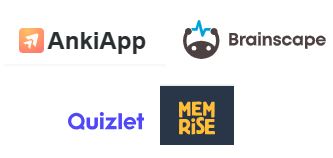Today we talk about the importance of measuring progress in learning Italian and we’ll give you eight tools to track and evaluate your progress. Learning a language is not a linear process, and learners can encounter plateaus. Measuring progress becomes crucial to maintain motivation and enthusiasm during these phases. Experiment with the tools, choose what works best for you and start measuring your progress today!
In particular, in this blog we’ll cover:
- Why measuring your progress matters
- Benefits of tracking your progress
- Tools for measuring progress
- What to do with your information
.
Why measuring progress matters
Motivation is key. Anyone who has engaged in language learning understands that the journey of learning Italian is extensive and often challenging. Many students perceive learning as a linear process, but this is not the case. Instances of this are prevalent at all levels, with the most noticeable being the transition to the intermediate level, where progress becomes more time-consuming. During such phases, individuals may feel stagnant and lose motivation.
Measuring progress becomes crucial to keeping you inspired, enthusiastic, and on track. It acts as a map, helping you understand your strengths, address weaknesses, and maintain your course. Regardless of whether you are just starting or already constructing sentences in Italian, measuring progress is akin to having a supportive friend cheering you on, showcasing how far you’ve come.

.
Benefits of tracking your progress
Progress tracking plays a crucial role in maintaining motivation for several reasons:
1. Visible Achievements:
Monitoring your progress allows you to see tangible achievements, no matter how small. Celebrating these victories, whether it’s learning new words to increase your vocabulary or successfully forming a sentence, provides a sense of accomplishment that boosts motivation.
2. Direction and Focus:
Tracking progress provides a clear direction for your learning journey. When you have specific goals and can see how you’re advancing, it helps you stay focused on what needs to be accomplished, reducing feelings of being overwhelmed.
3. Identifying Strengths:
Progress tracking helps you recognize areas where you excel. Knowing your strengths can be empowering and motivating, encouraging you to continue honing those skills.
4. Highlighting Improvement:
Regularly reviewing progress reveals improvements over time. This visual evidence reinforces the idea that your efforts are paying off and encourages you to persist in your language learning journey.
6. Adjusting Strategies:
If you notice areas where progress is slower, tracking allows you to adjust your learning strategies. This adaptability prevents frustration and keeps motivation high by ensuring you are using effective methods.
7. Building Confidence:
Success breeds confidence. By tracking your progress, you build confidence in your language abilities. Increased confidence contributes to a positive mindset, making you more eager to tackle new challenges.
8. Long-Term Perspective: Language learning is a journey that takes time. Progress tracking helps you maintain motivation by providing a long-term perspective. Seeing how far you’ve come encourages perseverance for the journey ahead.
9. Accountability:
Knowing that you are monitoring your progress creates a sense of accountability. This self-accountability encourages regular practice and engagement with the learning process.
There are numerous benefits to tracking your progress, including increased and sustained motivation, receiving valuable feedback, focusing on positive outcomes and avoiding plateaus.
But What is a Plateau?
Hitting a plateau in language learning is a common and sometimes frustrating experience. It’s a phase where you notice a slowdown or temporary halt in your progress despite ongoing efforts. Limited exposure, such as studying from the same materials, or a lack of variety, like focusing solely on grammar and vocabulary, can contribute to plateaus. By tracking progress, it’s easier to discern if you’re plateauing or if adjustments are needed. Any feedback is valuable as it allows for necessary changes.
Tracking progress enables you to concentrate on achievements rather than dwelling on negative thoughts.

8 tools to track your progress
I have listed and explained below a number of tools for tracking your progress. Play around with them, then choose two or three and start tracking. The 8 tools include:
- Keep a portfolio or journal
- Track your understanding of written materials
- Record yourself speaking
- Make your personal dictionary
- Testing
- Seek feedback from your teachers and others
- Track your learning time
- Use platforms that provide measurable data.
1. Keep a portfolio or journal
Creating a portfolio or journal is an excellent method for monitoring your progress and reflect on your learning journey. Gather examples of your work, including written assignments, audio recordings, and categorize them based on date, subject, or skill. Additionally, write down your thoughts, emotions, challenges, and successes throughout the process. This practice enables you to gauge your progress, identify acquired knowledge, and pinpoint areas for improvement.
2. Track your understanding of written materials
Choose a short story in Italian and underline everything you understand. This simple yet powerful technique involves reading texts or short stories and marking what you understand. Revisit the same text after a few weeks or at the end of your term to gauge progress. Utilize books of short stories or apps like Readlang, which provide graded texts for different language levels.
3. Record yourself speaking
Record yourself reading certain phrases to monitor pronunciation and track progress. Aside from progress tracking, listening to recordings helps identify mistakes and areas for improvement.
4. Make your personal dictionary
Track vocabulary learning by recording new words in a notebook, creating a personal dictionary. Periodically review the words, adding examples under each to reinforce context. Observing your expanding vocabulary boosts motivation.
5. Track Your Learning Time
Tracking your learning time has a direct impact on your progress. The more you spend on a language and the more you learn, this is undeniable. So the easiest way is to track your learning time on your calendar or use our tracker (download it here). Just record the time spent or if you enjoy the process of tracking, you can be even more specific and record what type of activity you did, for example, your lesson, some study at home, or other activities such as watching a YouTube video in Italian, a movie or reading a few pages of fiction in Italian.

6. Seek feedback from your teachers and others
If you are in one of our classes, even group classes, you can ask your teacher for an individual assessment. Your teacher knows you and she has a good understanding of what you need. After the assessment, she can make suggestions of what to do to help you keep your progress steady.
Our Premium group courses
We have also recently launched our premium group classes, these are standard group classes but with two individual, personalised classes. It means that the teacher will keep an eye on your progress and develop those areas that require attention in the individual classes that you’ll arrange during the course when is convenient.
Have a look at an example of a premium class here.
7. Testing
Take assessments, record results, and revisit the same test at the end of a term or after a year. Comparing results offers insights into your current level, overall progress, and specific areas that may need attention. We have an assessment test on our website and if you haven’t taken it yet, here it is.
8. Use platforms that provide measurable data

One last tool that you can use to measure your progress is platforms for learning that keep track of your performance. I have selected four for you, they are all free. Play with them and see if they work for you. They are:

.
How to Use Your Data
Now that you have collected data on your progress, it’s time to use them.
Celebrate Your Achievements: Always remember to celebrate your wins. Acknowledge your accomplishments, contemplate what you’ve achieved, and reward yourself. This reinforces learning habits and motivation. Consider indulging in a movie, book, Italian meal, or planning a trip to Italy as a suitable reward.
Revisit Your Goals: As you make significant progress, revisit your goals. Achieving initial objectives is commendable, but it’s crucial to set new, challenging goals. This continuous cycle of goal revision and progression keeps you engaged and motivated.
Fine-Tune Your Learning: If you feel progress is slower than desired, consider making changes to your learning approach.
Conclusions
Learning Italian is a big challenge, and you’re putting in a lot of hard work. However, there are times when it might feel like you’re not moving forward much.
That’s why it’s valuable to set learning goals and find ways to track your progress. This keeps you motivated, helps you figure out what works best for you, and gives you a clear idea of how close you are to reaching your goals.
The great thing is that most of these strategies not only measure progress but also help you get better. So, start using these strategies today, keep an eye on your progress, and when you look back in 3, 6, or 12 months, you’ll probably be surprised at how much you’ve improved.







